July 2, 2020
Medicine
Health and Wellness
THE INCIDENCE OF TENDINOPATHY IN FC BARCELONA’S TEAM SPORTS
Tendinopathy, which is characterised by the degeneration of the tendon and the suffering of intense pain, is a very frequent injury among athletes and it affects their performance. Sometimes it may require the interruption of sports practice, and in extreme cases, it could mean the end of their sports career. Tendinopathies are estimated to represent approximately 30% of musculoskeletal consultations (Nourissat et al., 2015).
Although its aetiology is multifactorial, the evidence seems to point to work overload as the key element in the origin of pain. Among the risk factors, a load which is greater than what a tendon can tolerate or is able to adapt is considered as one of the main extrinsic factors leading to tendinopathy (Nourissat et al., 2015). Other intrinsic risk factors such as age, sex, and hormonal and metabolic factors, could explain why up to 35% of individuals, in spite of not participating in sports activities, suffer from a tendinopathy injury (de Jonge et al., 2011).
The “sequence of injury prevention model” (van Mechelen et al., 1992) which was published in 1992, explains how we first need to establish the magnitude of the problem in terms of incidence and injury severity. After, the risk factors have to be identified, as well as the injury mechanisms relating it to the type of sport practised. For example, a classic study analysed the prevalence of patellar tendinopathy based on the type of sport and found that volleyball had the highest ratio (45%) followed by basketball (32%) (Lian et al., 2005). This has been the only research so far that has described the incidence of tendinopathies in elite athletes.
F.C. Barcelona Study
Recently, members of F.C. Barcelona’s Medical Department and the Barça Innovation Hub have published a retrospective study of all tendinopathy cases registered with F.C. Barcelona players (football, basketball, handball, roller hockey and futsal) between the 2008-2009 and 2015-2016 seasons (Florit et al., 2019). In total, 843 tendinopathy cases were recorded among the 3,839 professional and lower division players during these 8 seasons. A tendinopathy injury represented 22% of all cases registered by the club during the analysed period. The appearance of tendinopathy was more common particularly in basketball players (70%), professionals (36%), men (23%) and indoor sports (29%). The most frequent type of tendinopathy was patellar (12%), followed by Achilles (10%). Among the 843 cases of tendinopathy, there were 40 recurrences within the same season.
Regarding to the area affected, the highest incidence of patellar tendinopathy occurred with professional basketball players, which is more than four times what was observed with professional football players (23% v. 5%). As in the previous case, the highest incidence of Achilles tendinopathy happened in professional basketball players (20%), while that of hamstrings and adductors occurred in professional roller hockey players (7% and 11%, respectively). Finally, shoulder tendinopathy took place mainly among handball players (5%).
Regarding its effect on the players’ sports performance, most tendinopathies did not cause the player to miss training sessions or matches (64%), and only 5% of the cases meant that the player was inactive for more than 28 days. Among the tendinopathy cases that involved being out of the team’s routine, the average time to return to the sports activity was 7 days, being the long adductor tendinopathy the one that implied the longest period.
Conclusions
Tendinopathies represent a significant number of injuries in team sports, being more common in professional teams than in lower categories, especially in basketball and roller hockey. Finally, the coordination between coaches, physical trainers and medical services is necessary when implementing therapeutic measures from the moment the pathology appears, in order to limit the period that the player is inactive.
These infographics showcase the results from the research:
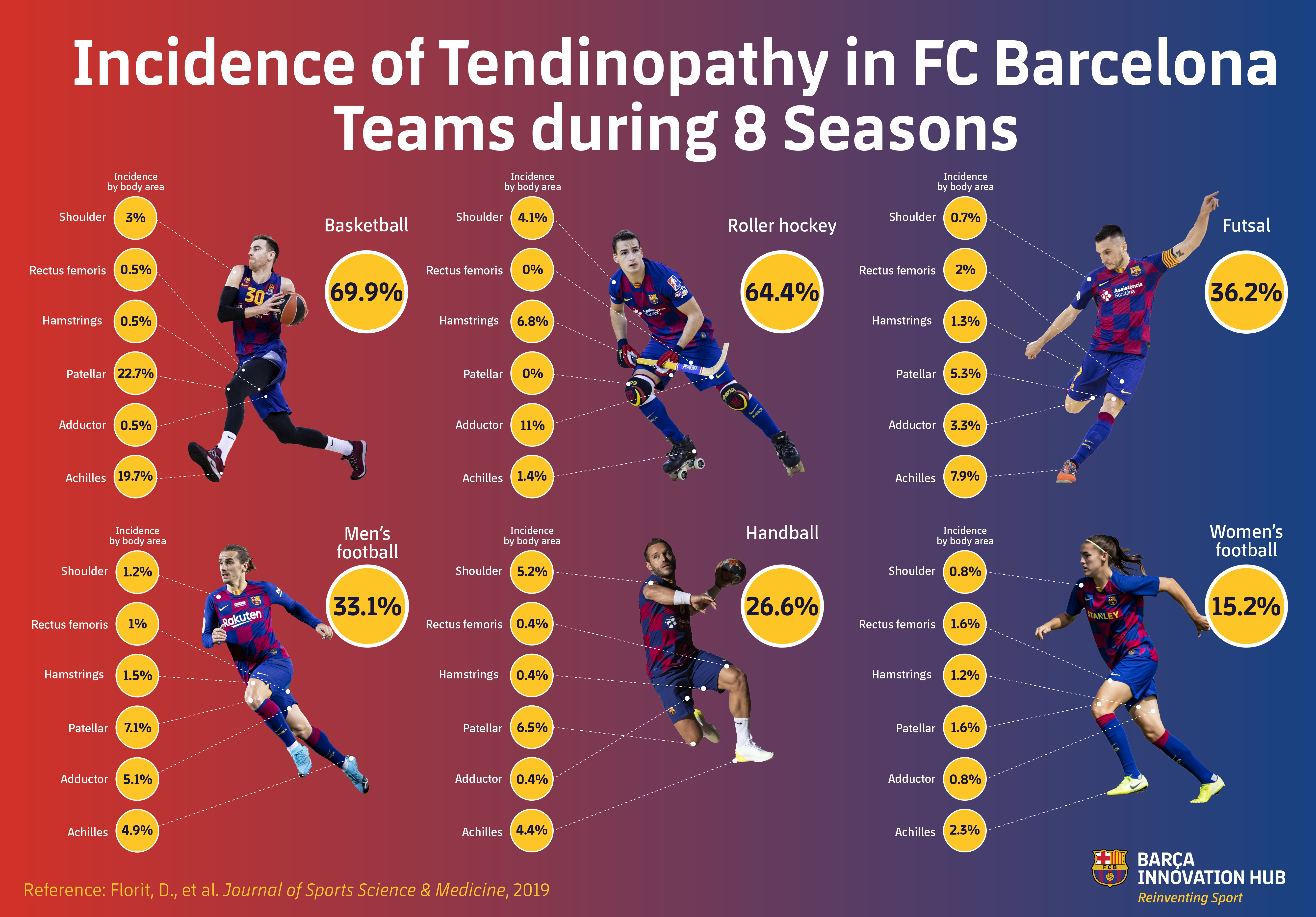
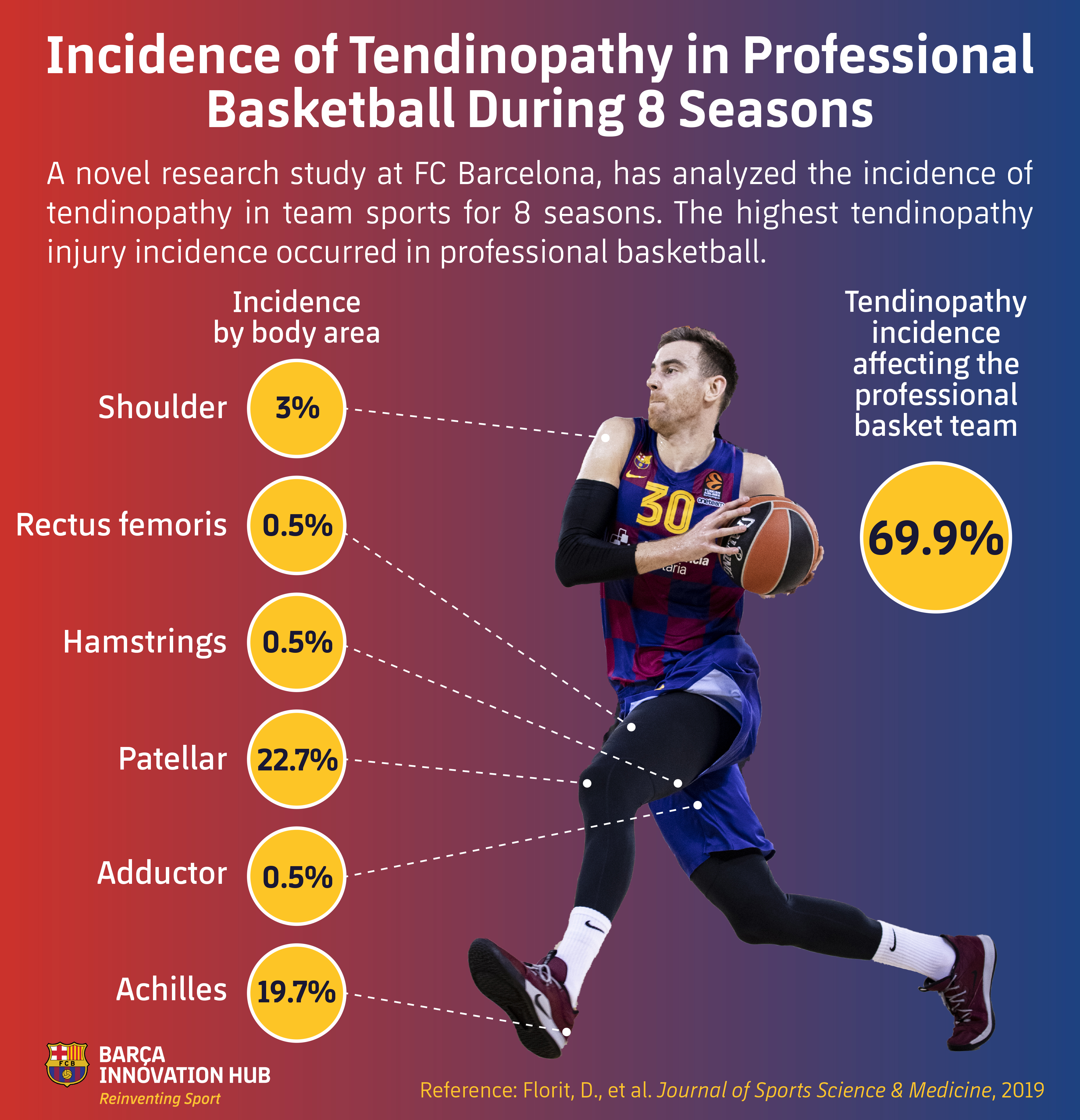
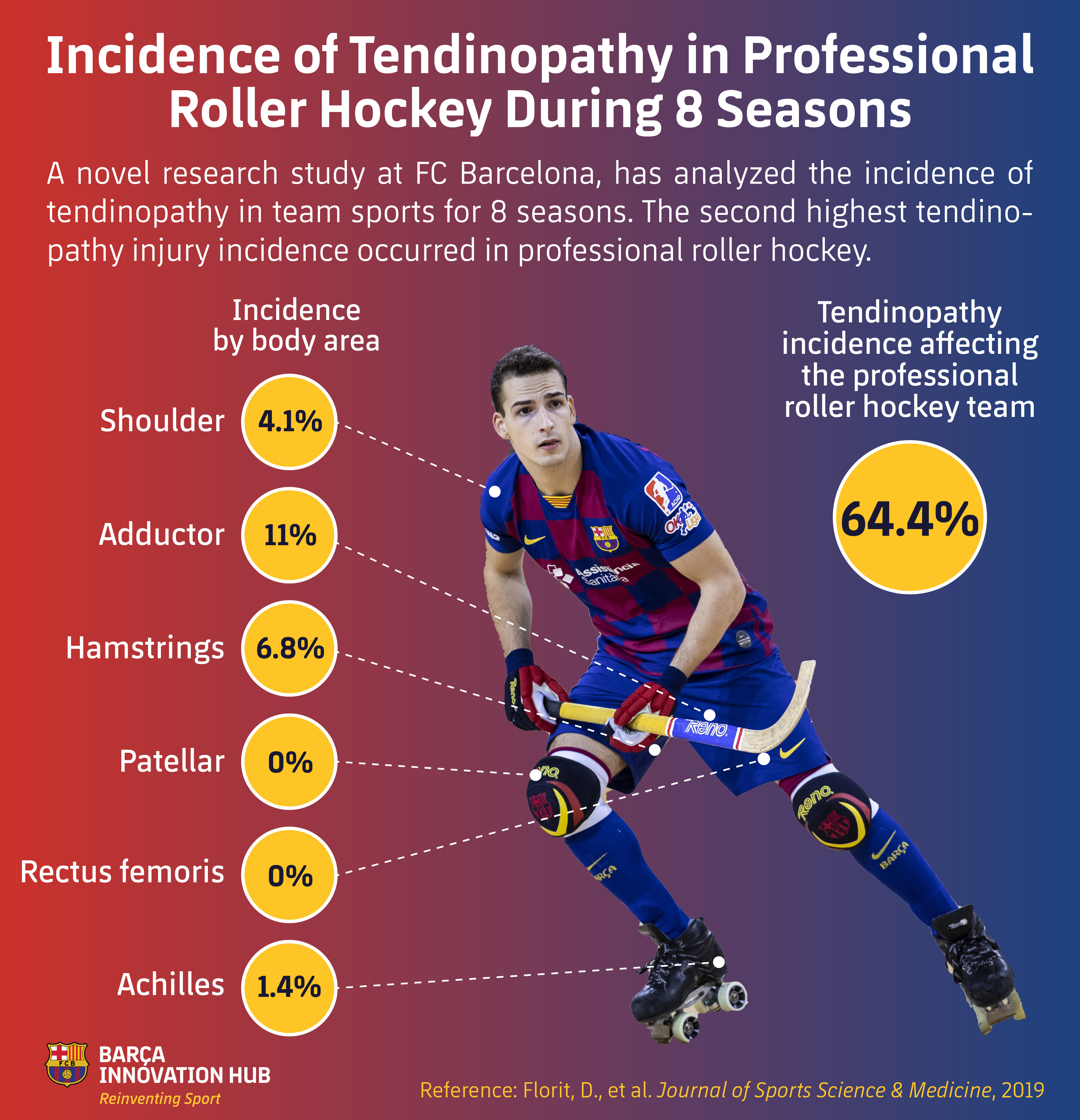
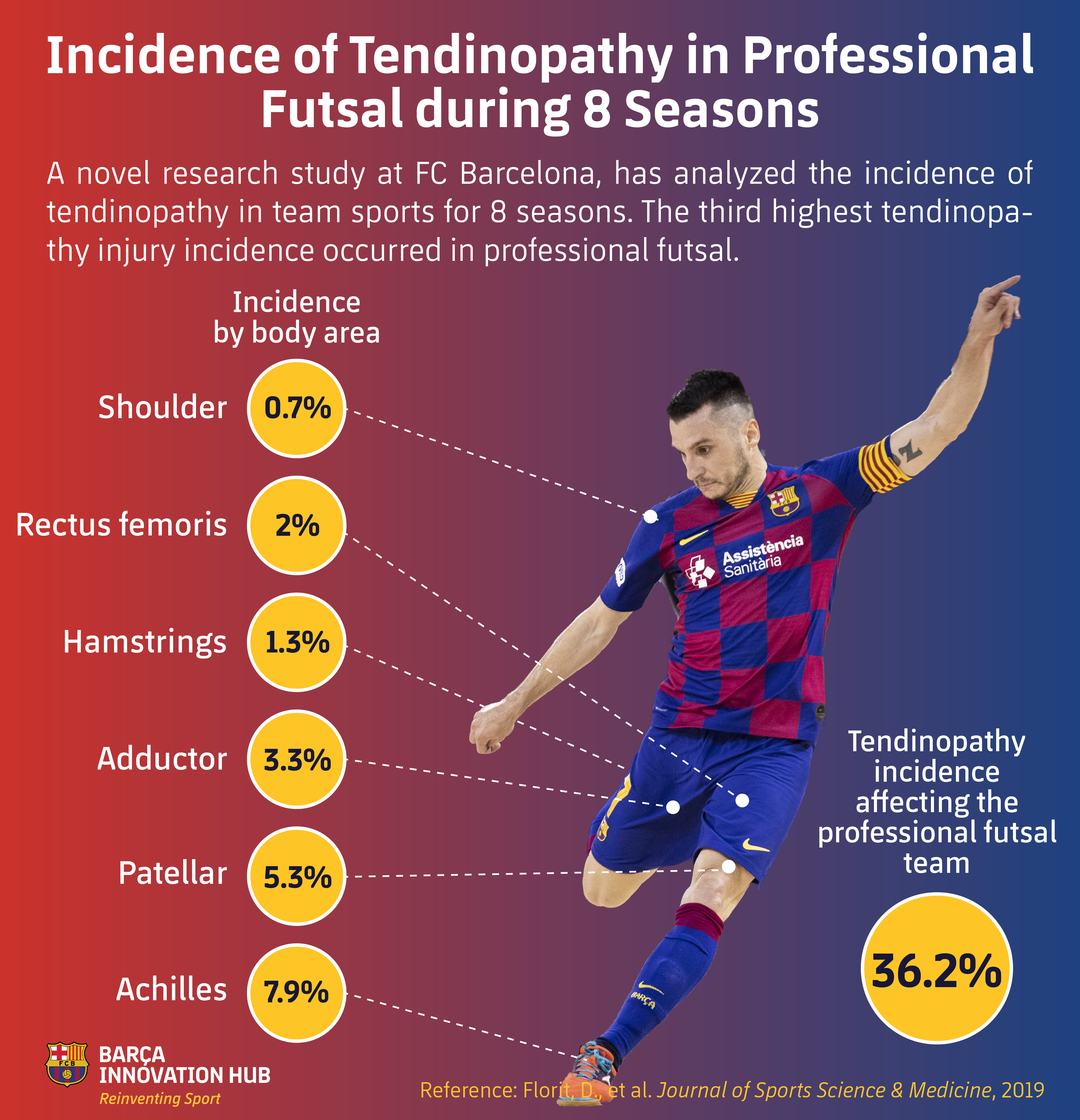
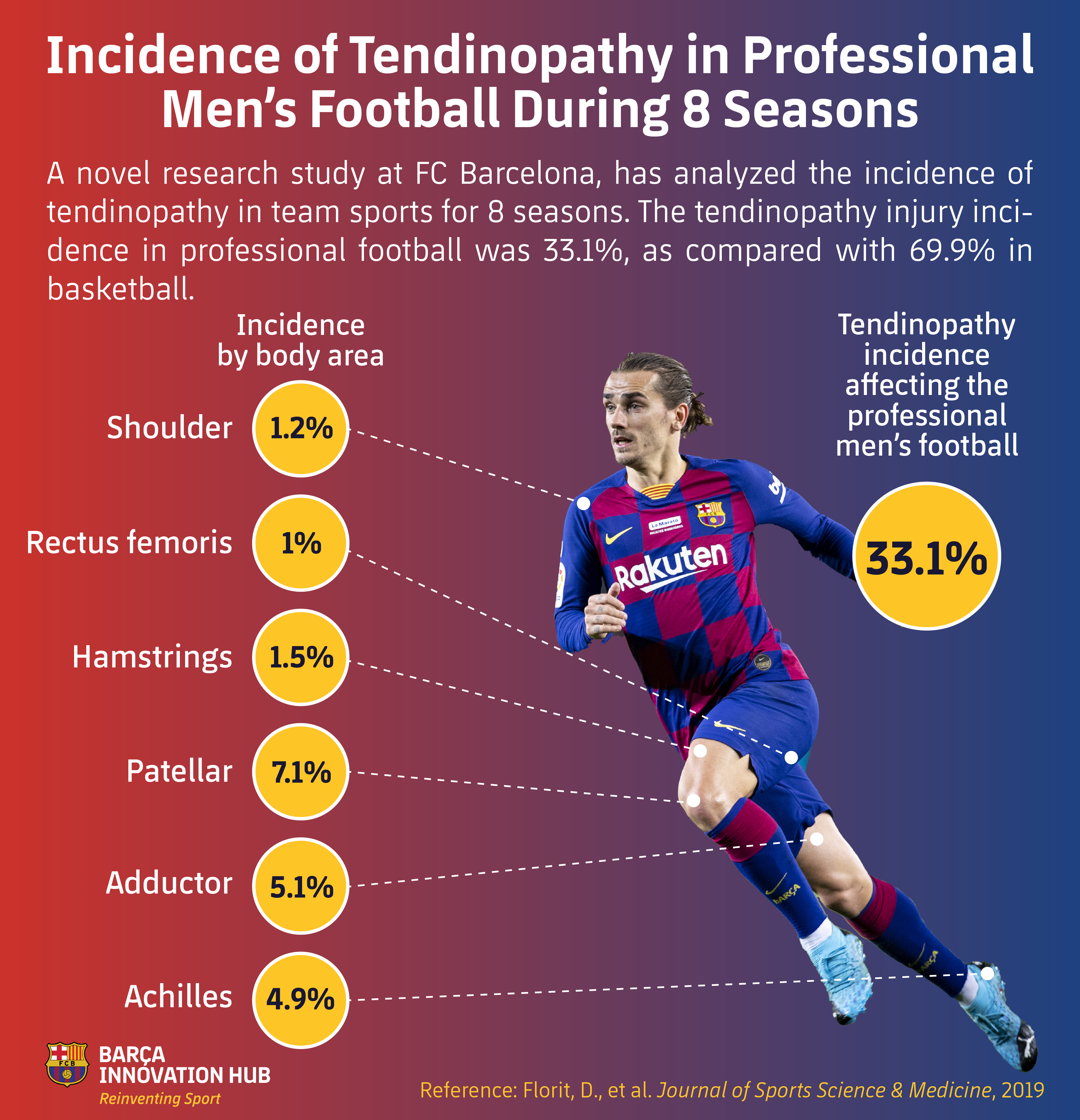
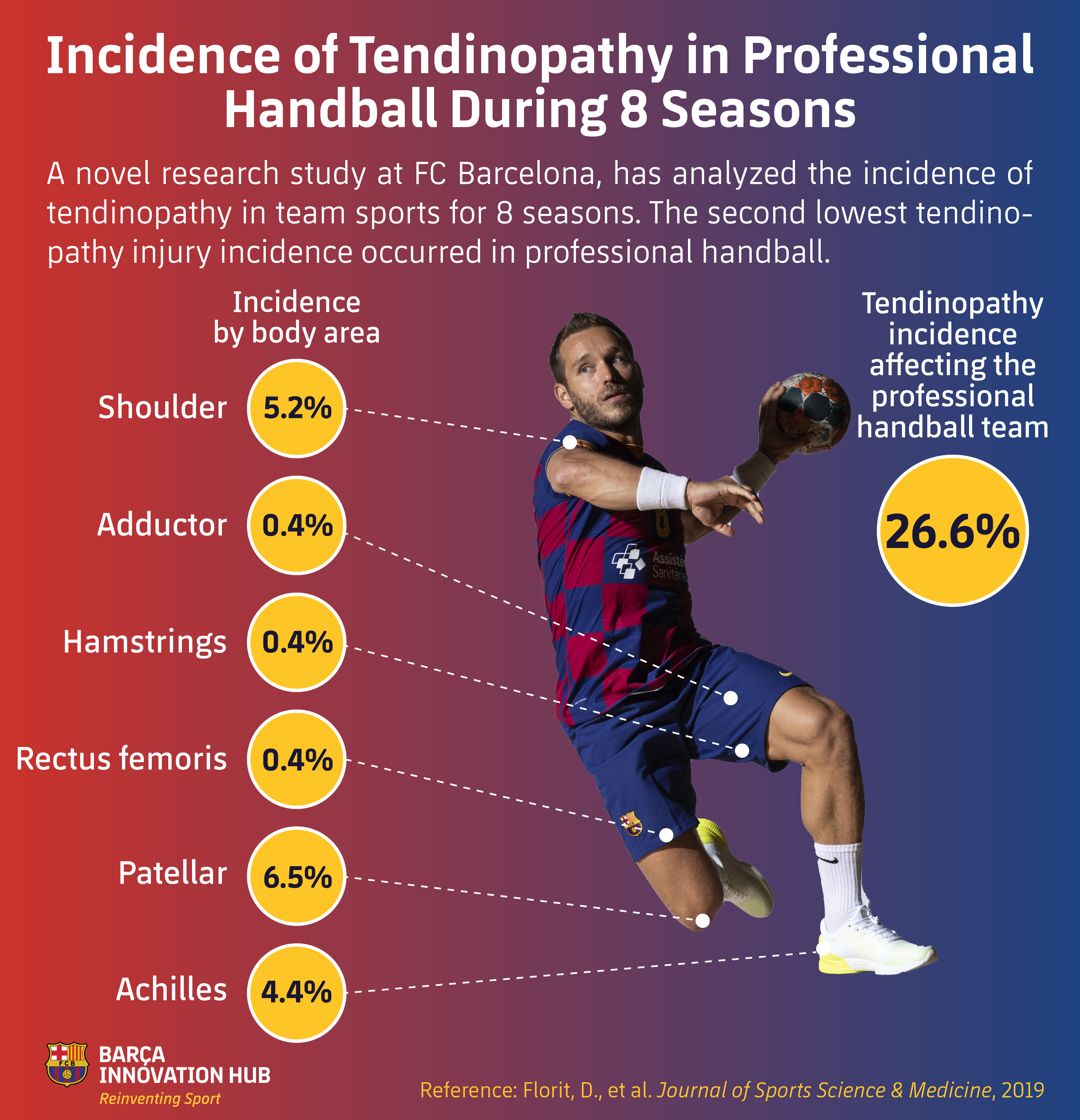
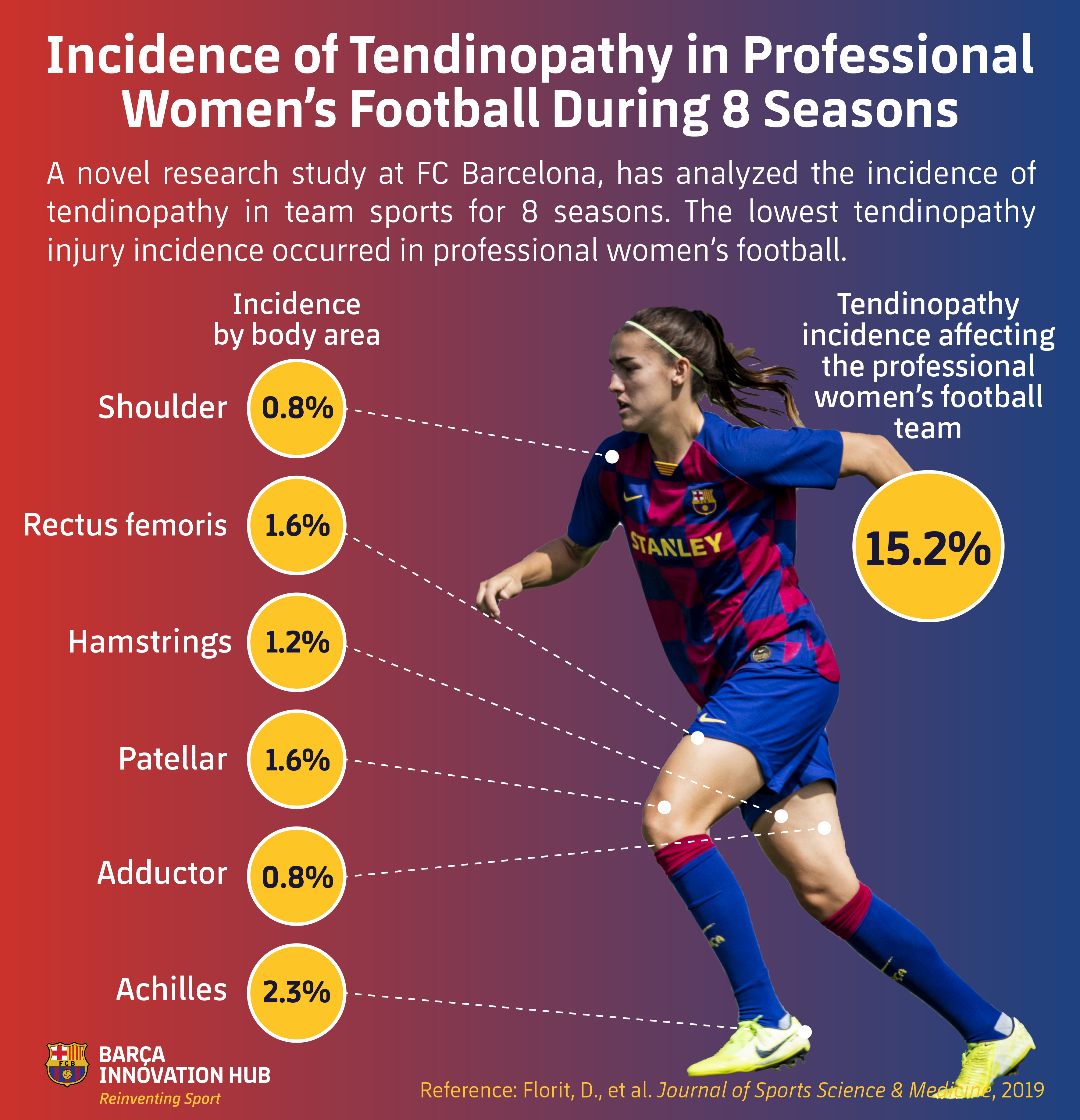
Adrián Castillo
References
de Jonge S, van den Berg C, de Vos RJ, van der Heide HJL, Weir A, Verhaar JAN, Bierma-Zeinstra SMA, & Tol JL (2011). Incidence of midportion Achilles tendinopathy in the general population. British Journal of Sports Medicine 45, 1026– 1028.
Florit D, Pedret C, Casals M, Malliaras P, Sugimoto D, & Rodas G (2019). Incidence of Tendinopathy in Team Sports in a Multidisciplinary Sports Club Over 8 Seasons. Journal of Sports Science & Medicine, 18, 780-788.
Lian ØB, Engebretsen L, & Bahr R (2005). Prevalence of Jumper’s Knee among Elite Athletes from Different Sports: A Cross-sectional Study. The American Journal of Sports Medicine 33, 561–567.
Nourissat G, Berenbaum F, & Duprez D (2015). Tendon injury: from biology to tendon repair. Nature Reviews Rheumatology 11, 223-233.
van Mechelen W, Hlobil H, & Kemper HCG (1992). Incidence, Severity, Aetiology and Prevention of Sports Injuries. Sports Medicine 14, 82–99.
KNOW MORE
CATEGORY: MARKETING, COMMUNICATION AND MANAGEMENT
This model looks to the future with the requirements and demands of a new era of stadiums, directed toward improving and fulfilling the experiences of fans and spectators, remembering “feeling” and “passion” when designing their business model.
CATEGORY: FOOTBALL SPORTS PERFORMANCE
Through the use of computer vision we can identify some shortcomings in the body orientation of players in different game situations.
CATEGORY: MEDICINE HEALTH AND WELLNESS
A health check must detect situations which, despite not showing obvious symptoms, may endanger athletes subject to the highest demands.
CATEGORY: FOOTBALL TEAM SPORTS
In the words of Johan Cruyff, “Players, in reality, have the ball for 3 minutes, on average. So, the most important thing is: what do you do during those 87 minutes when you do not have the ball? That is what determines whether you’re a good player or not.”
CATEGORY: MEDICINE HEALTH AND WELLNESS SPORTS PERFORMANCE
Muscle injuries account for more than 30% of all injuries in sports like soccer. Their significance is therefore enormous in terms of training sessions and lost game time.
DO YOU WANT TO KNOW MORE?
- SUBSCRIBE
- CONTACT
- APPLY
KEEP UP TO DATE WITH OUR NEWS
Do you have any questions about Barça Universitas?
- Startup
- Research Center
- Corporate